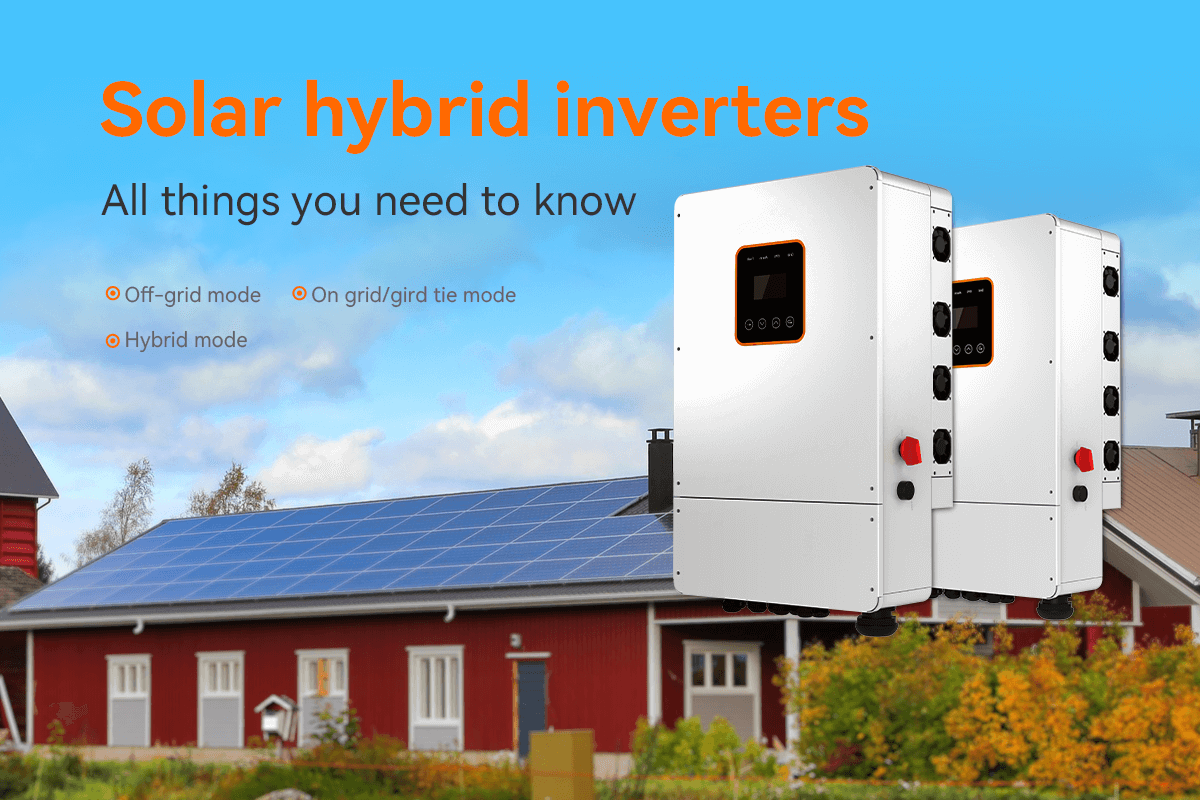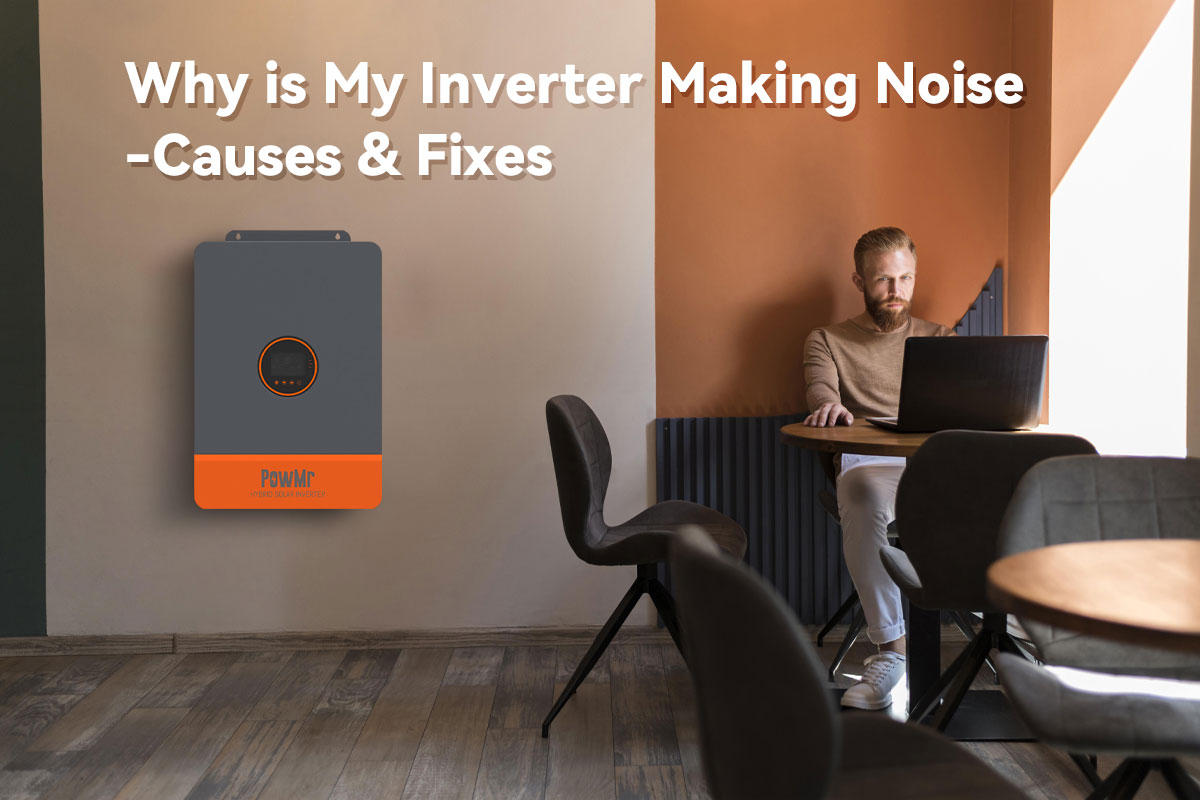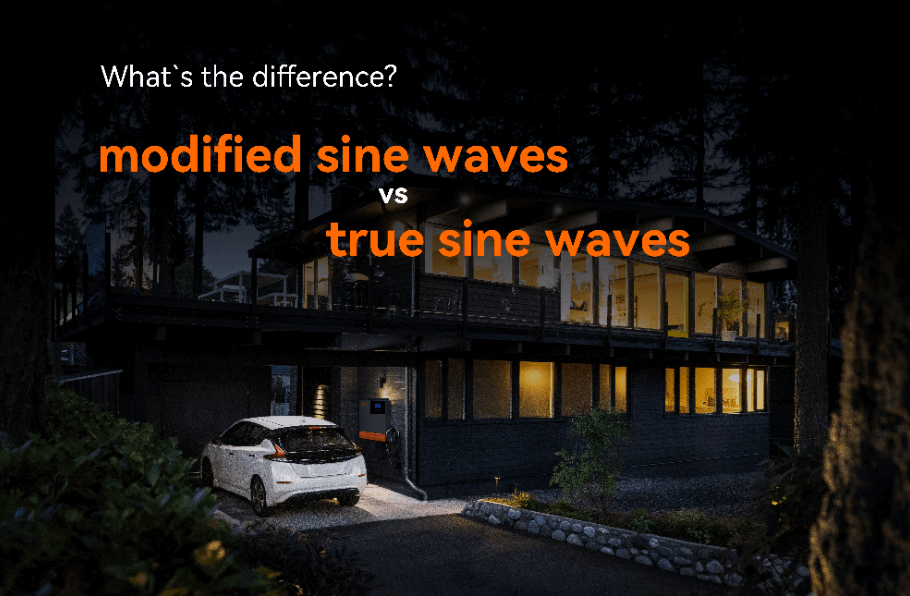อินเวอร์เตอร์คืออุปกรณ์ที่แปลงกระแสตรง (แบตเตอรี่, แบตเตอรี่สำรอง ฯลฯ) เป็นกระแสสลับ ในด้านวิชาชีพ อินเวอร์เตอร์จะหมายถึงเครื่องจักรที่สามารถเปลี่ยนกระแสตรงเป็นกระแสสลับได้เท่านั้น ในขณะที่เครื่องแปลงที่สามารถเปลี่ยนกระแสจาก AC เป็น DC จะเรียกว่า รีctifier อินเวอร์เตอร์และรีctifier เป็นเครื่องจักรที่สามารถเปลี่ยนแปลงลักษณะของกระแสได้ ดังนั้นทั้งคู่จึงเป็นเครื่องแปลง
ในปัจจุบัน มีประเภทของอินเวอร์เตอร์ที่แตกต่างกันมากมายในอุตสาหกรรมพลังงานแสงอาทิตย์ บ่อยครั้ง ฟังก์ชันของอินเวอร์เตอร์ ไม่เพียงแต่รวมถึงการแปลง แต่ยังรวมถึงการปรับกระแสไฟฟ้า การควบคุมแรงดันไฟฟ้าและความถี่ ฯลฯ ดังนั้น คำว่า "อินเวอร์เตอร์" จึงมักถูกใช้ในเชิงพาณิชย์ ซึ่งแตกต่างจากความหมายทางวิชาการของอินเวอร์เตอร์.
ในอุตสาหกรรมพลังงานแสงอาทิตย์ อินเวอร์เตอร์จะแบ่งออกเป็น อินเวอร์เตอร์พีวี, อินเวอร์เตอร์แบบออฟกริด, อินเวอร์เตอร์แบบออนกริด/กริดไท และอินเวอร์เตอร์แบบไฮบริด.
โซลาร์ไฮบริดอินเวอร์เตอร์คืออะไร?
อินเวอร์เตอร์ไฮบริดสามารถเข้าใจได้ว่าเป็น การรวมกันของอินเวอร์เตอร์เชื่อมต่อกริดพลังงานแสงอาทิตย์และอินเวอร์เตอร์ออฟกริด ซึ่งส่งพลังงานไฟฟ้าจากพลังงานแสงอาทิตย์และพลังงานเพิ่มเติมจากแบตเตอรี่ไปยังกริด และกู้คืนไฟฟ้าจากกริดเมื่อพลังงานที่ผลิตจากแหล่งพลังงานทดแทนไม่เพียงพอ กล่าวอีกนัยหนึ่ง อินเวอร์เตอร์เหล่านี้สามารถทำงานเป็นอินเวอร์เตอร์ออฟกริดและเป็นอินเวอร์เตอร์เชื่อมต่อกริดขึ้นอยู่กับสถานการณ์ของโหลด.
นอกจากนี้ อินเวอร์เตอร์ไฮบริดยังมีโมดูลอัจฉริยะที่รวมอยู่สำหรับการจัดการพลังงานและการส่งข้อมูล ทำให้มันเป็นอุปกรณ์ไฟฟ้าที่มีระดับความซับซ้อนทางเทคโนโลยีสูง อินเวอร์เตอร์ไฮบริด เป็นหัวใจและสมองของระบบจัดเก็บพลังงานทั้งหมด โดยการเชื่อมต่อ ติดตาม และจัดการโมดูลต่างๆ เช่น แผงโซลาร์เซลล์ โซล่าคอนโทรลเลอร์ โหลด และกริด.
อินเวอร์เตอร์ไฮบริดทำงานอย่างไร?
ฟังก์ชันของอินเวอร์เตอร์ไฮบริดจะแตกต่างกันไปตามภาระ โดยทั่วไปผู้ใช้สามารถตั้งค่าอินเวอร์เตอร์ไฮบริดให้ให้ความสำคัญกับพลังงานจากไฟฟ้าหลัก แบตเตอรี่ หรือพลังงานแสงอาทิตย์ และชาร์จแบตเตอรี่หรือจ่ายพลังงานให้กับภาระก่อน ขึ้นอยู่กับความต้องการที่แท้จริง
ดังนั้น ที่นี่เราจึงได้แบ่งโหมดการทำงานของอินเวอร์เตอร์โซลาร์ไฮบริดออกเป็นสามประเภทตามอุปกรณ์ที่เชื่อมต่ออยู่
โหมดออฟกริด
โหมดออฟกริดหมายถึงการที่อินเวอร์เตอร์จ่ายพลังงานให้กับโหลด โดยไม่ถูกกระทบจากกริด หากพลังงานแสงอาทิตย์ให้พลังงานเพียงพอสำหรับโหลด พลังงานส่วนเกินจะถูกเก็บไว้ในแบตเตอรี่ มิฉะนั้น แบตเตอรี่และแผงโซลาร์เซลล์จะจ่ายพลังงานให้กับโหลดในเวลาเดียวกัน.
โหมดเชื่อมต่อกับกริด
โหมดเชื่อมต่อกับกริด/กริดหมายความว่าในระบบพลังงานแสงอาทิตย์ทั้งหมด เฉพาะ PV และกริดเท่านั้นที่สามารถทำงานได้ และแบตเตอรี่ไม่สามารถทำงานได้ ในกรณีนี้ อินเวอร์เตอร์ไฮบริดทำหน้าที่เป็นอินเวอร์เตอร์ PV ปกติ หากแผงโซลาร์เซลล์สามารถผลิตไฟฟ้าได้เพียงพอ พวกเขาจะส่งไฟฟ้าไปยังกริด และหากไม่สามารถผลิตได้เพียงพอ พวกเขาจะดึงไฟฟ้าจากกริด

โหมดไฮบริด
ในโหมดนี้ อินเวอร์เตอร์จะเชื่อมต่อกับกริด แบตเตอรี่ แผงโซลาร์เซลล์ และโหลดพร้อมกัน ในโหมดนี้ อินเวอร์เตอร์มีเงื่อนไขการทำงานสามประการดังต่อไปนี้:
-
หากมีปัญหากับกริดหรือเมื่อพลังงานโฟโตโวลตาอิกเพียงพอสำหรับการทำงานของโหลด ฟังก์ชันของมันจะเปลี่ยนเป็นฟังก์ชันของอินเวอร์เตอร์แบบออฟกริด ในกรณีนี้ สวิตช์เปลี่ยนจะตัดการเชื่อมต่ออินเวอร์เตอร์จากกริด.
-
ทันทีที่พลังงานโฟโตโวลตาอิกเริ่มสร้างพลังงานเพิ่มเติม โหมดการทำงานจะเปลี่ยนจากโหมดออฟกริดเป็นโหมดออนกริด อินเวอร์เตอร์จะเปลี่ยนความถี่และเฟสของกระแสไฟฟ้าและเริ่มส่งพลังงานเพิ่มเติมไปยังกริด.
-
แม้ในขณะที่ไม่มีพลังงานแสงอาทิตย์ อินเวอร์เตอร์สามารถจ่ายไฟให้กับโหลดผ่านกริดหรือตัวแบตเตอรี่ได้
อินเวอร์เตอร์ไฮบริดพลังงานแสงอาทิตย์คุ้มค่าหรือไม่?
ทำเงินจากการให้พลังงานกับกริด
ในช่วงเวลาที่มีราคาค่าไฟฟ้าต่ำ (ช่วงเวลาหุบเขา) สาธารณูปโภคจะชาร์จแบตเตอรี่ผ่านอินเวอร์เตอร์ ในช่วงเวลาที่มีการใช้ไฟฟ้าสูง (ช่วงเวลาที่มีราคาค่าไฟฟ้าสูง) อินเวอร์เตอร์จะส่งพลังงานออกมาอย่างเต็มที่ และพลังงานจากแบตเตอรี่จะถูกส่งไปยังไฟฟ้าหลักภายใต้เงื่อนไขที่ตอบสนองความต้องการโหลด เพื่อให้บรรลุวัตถุประสงค์ในการขายไฟฟ้าเข้าสู่กริด มันไม่เพียงแต่ช่วยลดความกดดันต่อไฟฟ้าหลัก แต่ยังนำผลประโยชน์ทางเศรษฐกิจที่เกิดจากความแตกต่างของราคาช่วงพีคและช่วงหุบเขามาสู่ผู้ใช้ด้วย
หลายประเทศในปัจจุบันมีนโยบายที่สนับสนุนพลังงานแสงอาทิตย์แบบโฟโตโวลตาอิกและส่งไฟฟ้ากลับเข้าระบบ โดยผู้ใช้จะได้รับ เงินอุดหนุน อย่างไรก็ตาม เงื่อนไขเบื้องต้นคืออินเวอร์เตอร์ต้องมี การรับรองความปลอดภัยในท้องถิ่นและผู้ใช้ต้องยื่นคำขอไปยังหน่วยงานไฟฟ้าของชาติในท้องถิ่น ก่อน สำหรับผู้ใช้ในสหรัฐอเมริกา PowMr อินเวอร์เตอร์ไฮบริดพลังงานแสงอาทิตย์ “SunSmart 10K” คุ้มค่าที่จะพิจารณา.
การผลิตพลังงานนอกกริดสำหรับสถานการณ์ฉุกเฉิน
เมื่อกริดล้มเหลว โหมดเชื่อมต่อกริดของอินเวอร์เตอร์จะหยุดทำงานและ เปลี่ยนไปเป็นโหมดออฟกริดโดยอัตโนมัติ และพลังงานแสงอาทิตย์จะยังคงจ่ายพลังงานให้กับโหลด ทำให้คุณมีพลังงานพร้อมใช้งานในกรณีฉุกเฉิน พลังงานโฟโตโวลตาอิกที่เหลือสามารถเก็บไว้ในแบตเตอรี่ได้ด้วย
เพิ่มการใช้พลังงานแสงอาทิตย์ให้สูงสุด
ไม่ว่าจะเป็นโหมดการทำงานใด ระบบจะให้ความสำคัญกับการใช้พลังงานจากโซลาร์เซลล์ เมื่อไม่เพียงพอ พลังงานจะถูกเสริมด้วยไฟฟ้าจากสายไฟหลักหรือแบตเตอรี่ หากมีไฟฟ้าที่ผลิตได้จากโซลาร์เซลล์เกิน จะถูกเก็บไว้ในแบตเตอรี่หรือส่งกลับเข้าระบบไฟฟ้าเพื่อให้ใช้พลังงานจากโซลาร์เซลล์ได้สูงสุดโดยไม่สูญเสียพลังงาน.



